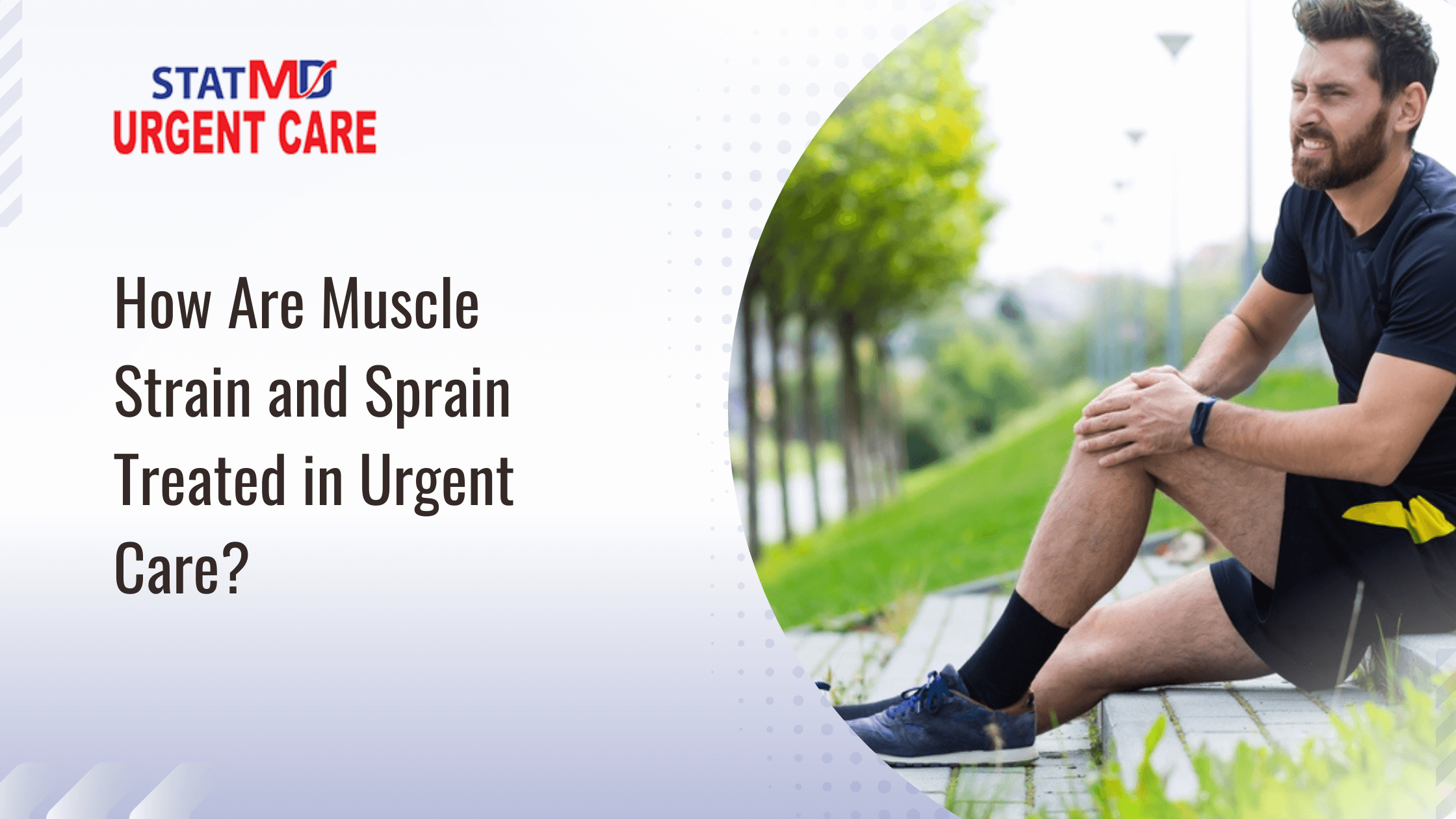
Flu Shots Now Available Don't Miss Out on Limited Supply!
For Young St: (661) 464-5000
For Panama Lane: (661) 464-5001

A strain is an injury to the muscle or tendon, while a sprain involves damage to the ligaments connecting bones. Though often used interchangeably, they are distinct conditions. However, a sprain damages ligaments connecting bones, and a strain is an injury to a muscle or tendon connecting muscle to bone. Continue reading the article to learn a thorough overview of both, along with information on how to treat them and when you should seek immediate medical attention.
Pulling a muscle, also known as a muscle strain, is an injury to the muscle fibers caused by overstretching or tearing. It typically occurs due to overuse, fatigue, or excessive force during physical activity. A muscle pull can range from mild to severe, and symptoms include pain, muscle weakness, and tenderness.
A muscle pull usually feels like a sudden, sharp pain in the affected muscle. The pain associated with a muscle strain can range from mild to severe, depending on the extent of the injury. A mild pressure may cause discomfort and tenderness, while a more severe strain can result in intense pain. The intensity of pain can also vary from person to person and may be influenced by factors such as age, overall health, and the severity of the injury.
Signs and symptoms of muscle strain and muscle sprain can be similar, but some differences exist.
When a muscle is overextended or torn, it can cause a painful strain. There are two types of strains i.e., acute strains and chronic strains. The former is produced by unexpected and sudden tearing, whereas the latter is caused by repetitive movement. A patient will typically experience the following symptoms:
Consequently, damage to a muscle or its attached tendons is a muscle strain or a muscle pull. Small blood vessels damaged by the muscle ripping may also result in localized bleeding or bruising and discomfort from stimulation of the nearby nerve terminals.
Depending on the degree of the damage, there may be a variety of signs and symptoms, similar to muscle strain. However, with a sprain, there may also be joint instability, while with a muscle strain, there may be muscle spasms.
Every muscle in the body can be overworked, strained, or bent incorrectly. The following are the most typical places where muscle strains happen:
It's a prevalent misconception that only demanding training and rigorous activity cause muscle strains. Muscle strains can even be brought on by walking. Most of the time, injuries or trauma lead to muscle rips. This could be due to the following:
Unlike acute strains, chronic strains come from repetitive motions. This can be caused by the following
See Also: Common Injuries That Need Immediate Medical Care
First aid and appropriate care can be used to treat mild to moderate strains at home. To treat a muscular strain effectively, use the R.I.C.E. approach, which stands for:
Rest
For the first day or two following the strain, try to utilize the strained muscle as little as possible. Increase activity gradually after the second day, careful not to strain the muscle once more.
Ice
After an injury, immediately putting on ice will assist in minimizing swelling. Additionally, until the damage heals, ice should be applied once every hour for 15 minutes.
Compression
Applying an elastic bandage or medical wrap to the injured region can reduce swelling. Keep it tight enough to prevent blood flow, though.
Elevate
Try to maintain the damaged area elevated above the level of the heart to reduce swelling.
Other therapy options include applying heat, using anti-inflammatory drugs like acetaminophen, and performing mild stretches and warm-up activities if the pain is manageable.
You should see a doctor if the following symptoms persist:
Through affordable X-ray and medical imaging services, your doctor can determine the extent of your injuries. Anti-inflammatory medicines and painkillers may be used to treat pain and swelling. Your doctor could also suggest physical therapy to help the muscle regain strength and mobility.
See Also: Does Urgent Care Provide Treatment for Broken Bone?
As soon as you sustain a sprain, you should go to an urgent care center to minimize other health concerns and speed up your recovery. StatMD Urgent Care provides some of the best personal injury care in Bakersfield, CA. Our urgent care center will provide timely and courteous service to help you regain your energy in less to no downtime. Contact us today if you or your loved ones are looking for the best urgent care in Bakersfield, CA.